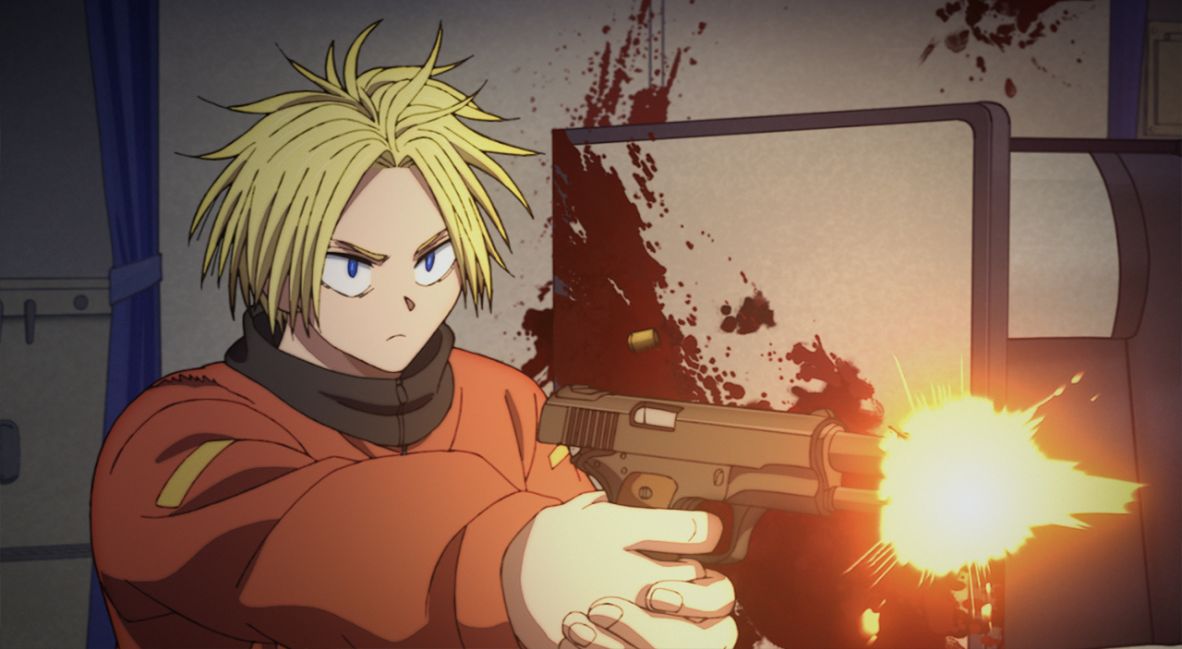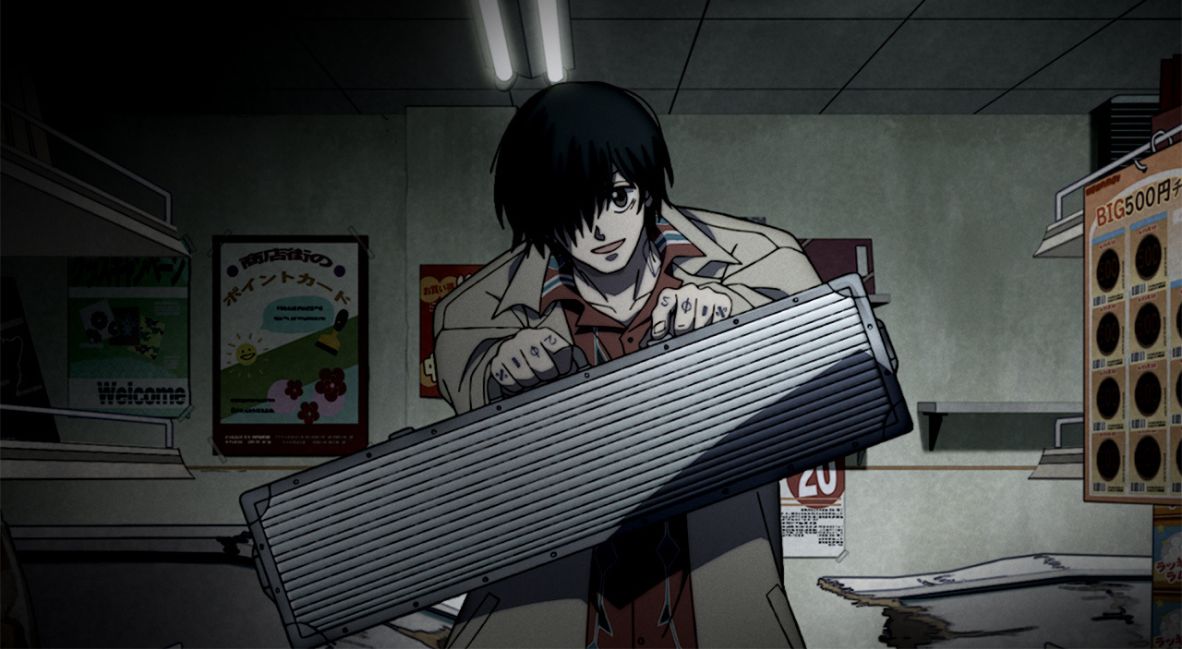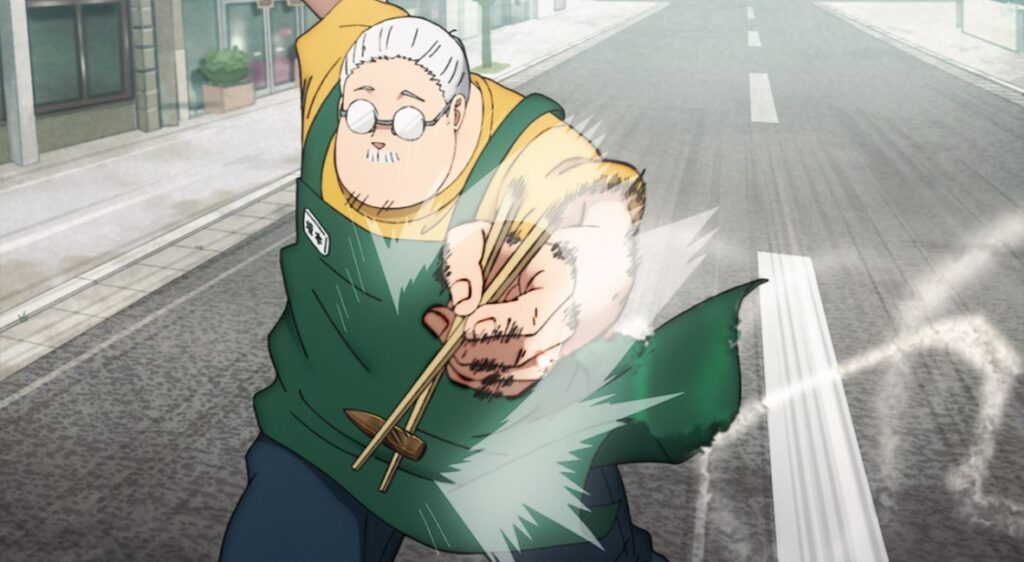There was a lot of heated discourse leading up to the premiere of Sakamoto Days Season 1. The main cause of the nagging, incessant complaints was that the animation from the previews wasn’t delivering the level of animation that other, popular series (see: Jujutsu Kaisen) did. Considering this was all based on pre-release media, written by people on the internet, and said people using one of MAPPA’s series- a studio notorious for mistreating its talent – as a comparative, the whining grew old and fast.
All of which is to say two things. First, like many, I walked into the Netflix adaptation hoping to love it. Secondly, and most gratingly, the concerns, while irritatingly delivered, were valid. The anime’s look simply fails to live up to the standard of the source material, but it extends beyond the action and into crucial, foundational style choices made by director Masaki Watanabe. Sakamoto Days Season 1 was doomed to mediocrity from the start.
Based on the phenomenal manga from writer and illustrator Yuto Suzuki, Sakamoto Days follows the retired hitman, Taro Sakamoto (Tomokazu Sugita). Once referred to as a legendary hitman, he has now settled into the life of a husband and father, unrecognizable to those who once knew him. His wife, Aoi (Nao Tōyama), had one rule before getting into a relationship: he would leave his killing days behind him.
Sakamoto Days Season 1 maintains our interest due to a strong core cast.

His life is upturned at the arrival of three wandering individuals. First is the clairvoyant hitman, Shin Asakara (Nobunaga Shimazaki), who greatly admires Sakamoto. Soon to follow is Lu Xiaotang (Ayane Sakura), the orphaned daughter of a former crime boss, and the sniper Heisuke Mashimo (Ryōta Suzuki). As this found-family dynamic strengthens, the group must contend with other hitmen from Sakamoto’s past, such as members of The Order, and a mysterious figure known as Slur.
In the first cour of Sakamoto Days Season 1, there was room for excuses. Quite frankly, the manga takes a bit to really gain its footing and move out of the setup zone. It would also be expected that the anime would follow suit. There are only so many anime that arrive fully realized, and ones like it (DanDaDan, The Summer Hikaru Died) are rarities.
Series survive these growing pains with lovable characters, of which Sakamoto Days has plenty. Sakamoto himself is almost too enigmatic and stony-faced in the adaptation, and Tomokazu Sugita’s vocal cadence and gravitas render the character much older than he’s meant to be (friendly reminder that, despite the styling and how the character is treated, Sakamoto is only a ripe old 27 years old). However, the rest of the eclectic ensemble helps maintain a lively energy.
From beginning to end, Shin is our MVP.

As is the case in the manga, our lovably scrappy Shin is the MVP and not just in terms of the narrative. His fight scenes are the only time when the animation comes alive, propelling the series forward and out of the rigid, overdrawn lines of the visuals. Lu and Heisuke help round out the Team Sakamoto group, as their shared outcast statuses help them redefine their own journeys based on the positive influence of Sakamoto.
The ensemble grows even sturdier with the introductions of Order members Shishiba (Taku Yashiro) and Osagari (Saori Hayami) – though it’s Nagumo (Natsuki Hanae) who has the most immediate impact. He’s an instant fan favorite, evident by his most animated personality in the Second Cour OP alone. He, along with newcomer allies Mafuyu (Daiki Yamashita) and Toramaru (Hisako Kanemoto), and antagonists Slur (Daisuke Namikawa) and Gaku (Koki Uchiyama), help maintain a level of appeal even as the animation grows rote and tiresome.
Sakamoto Days Season 1 features standout episodes that suggest a deeper creative insight. However, they’re infrequent because, again, so much of the underlying issues stem from choices made at the very start that have come to dictate the show’s tone and aesthetic.
The Netflix adaptation suffers due to poor stylistic choices.

In theory, it makes sense to adapt the show into a style that leans into the comic, pop-art aesthetic with noir musical cues. It is, after all, a story about a hitman. But it’s there that the anime immediately loses its hold on the ethos. Because Sakamoto Days isn’t a story about assassins.
Or, rather, the heart of the story isn’t. It’s a story about the dedication of one man and how a twist of fate led him to discover a new, happier path. And how one person bettering themselves can improve the lives of those they interact with.
The series isn’t meant to be brooding. There are serious implications and dark storylines, absolutely. And each character is treated with a necessary gravitas, even the ones initially introduced as comic relief. However, the crux of the story lies in the bond between people and how they enrich one another’s lives. Sakamoto Days isn’t meant to be cool – it’s meant to be fun. And it’s funny! Yet the series so often swings and misses when landing punchlines.
Despite its efforts, Sakamoto Days struggles to elevate the source material.

All of which would still be palatable if the moments the show prioritizes were done well, and yet the execution of the action is lacking. A good anime adaptation needs to take the source material and honor it. That’s the first play. However, it needs to elevate it beyond the existing limits of the medium and transform it into something cinematic – something big, bold, and binge-worthy.
Yet the action is all stylistically inert despite inertia being a pivotal note of artistry in the manga. Again, in the series defense, this becomes much more present in the upcoming arcs. But from day one, Sakamoto Days is a series about plummeting through mid-air, crashing vehicles through immovable objects, and leaping to the highest surfaces only to tumble into another abyss. The story is in constant, breakneck motion, driven by its visuals alone.
Sakamoto Days Season 1 isn’t an out-and-out failure. The story is engaging, and the majority of the voice performances are strong, with a few noteworthy moments. If it were just standing against a group of standard adaptations, it would be one thing. But all in all, TMS Entertainment proves an ill-suited suitor for the series, creating a stall in momentum before it’s even had a chance to accelerate.
Sakamoto Days Season 1 is out now on Netflix.
Sakamoto Days Season 1
-
Rating - 6/106/10
TL;DR
Sakamoto Days Season 1 isn’t an out-and-out failure. But all in all, TMS Entertainment proves an ill-suited suitor for the series, creating a stall in momentum before it’s even had a chance to accelerate.







